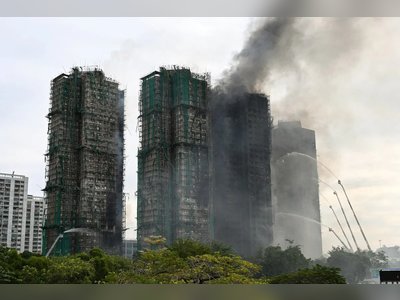Trump’s White House Ballroom Project Signals Break with Obama-Era Renovations
President Donald Trump's demolition of the East Wing and plan for a 90,000-square-foot ballroom draws comparison with Barack Obama’s more modest interior upgrades
Work began in October on the demolition of part of the East Wing of the White House, clearing the way for a new 90,000-square-foot ballroom championed by President Donald Trump.
The project is estimated to cost up to three hundred million dollars and is being funded through private donations, amid historic-preservation concerns and congressional scrutiny.
By contrast, the renovation initiated under President Barack Obama was a congressionally approved infrastructure upgrade that began after a 2008 authorisation.
That earlier work focused on replacing electrical wiring, cooling systems and other internal utilities rather than altering the building’s structure.
It was funded by taxpayer dollars and did not involve demolition of external architectural elements.
Trump’s plan differs in key respects.
The East Wing, constructed originally in 1902 and expanded in 1942, is being replaced in full rather than refurbished.
The forthcoming ballroom will accommodate nearly a thousand guests, vastly exceeding the size of the previously used East Room and other event spaces.
Historic-preservation bodies say this represents the largest structural change to the White House since the late 1940s, and they caution that the review process has been bypassed despite the building’s status and significance.
Supporters argue that the expansion reflects the needs of a modern presidency and follows a tradition of presidential improvements to the White House.
They emphasise that the funding is private and therefore does not burden taxpayers.
According to a recent public poll, however, fifty-six percent of Americans oppose the project while just twenty-eight percent support it.
Opposition is especially strong outside the Republican base.
Observers note that the debate centres not only on cost and preservation but on the broader question of how the White House is to function in President Trump’s second term and beyond.
With demolition underway and construction expected to wrap up before 2029, the project marks a bold departure from the more incremental Obama-era updates and reflects a distinctively ambitious vision for the “People’s House.”
The project is estimated to cost up to three hundred million dollars and is being funded through private donations, amid historic-preservation concerns and congressional scrutiny.
By contrast, the renovation initiated under President Barack Obama was a congressionally approved infrastructure upgrade that began after a 2008 authorisation.
That earlier work focused on replacing electrical wiring, cooling systems and other internal utilities rather than altering the building’s structure.
It was funded by taxpayer dollars and did not involve demolition of external architectural elements.
Trump’s plan differs in key respects.
The East Wing, constructed originally in 1902 and expanded in 1942, is being replaced in full rather than refurbished.
The forthcoming ballroom will accommodate nearly a thousand guests, vastly exceeding the size of the previously used East Room and other event spaces.
Historic-preservation bodies say this represents the largest structural change to the White House since the late 1940s, and they caution that the review process has been bypassed despite the building’s status and significance.
Supporters argue that the expansion reflects the needs of a modern presidency and follows a tradition of presidential improvements to the White House.
They emphasise that the funding is private and therefore does not burden taxpayers.
According to a recent public poll, however, fifty-six percent of Americans oppose the project while just twenty-eight percent support it.
Opposition is especially strong outside the Republican base.
Observers note that the debate centres not only on cost and preservation but on the broader question of how the White House is to function in President Trump’s second term and beyond.
With demolition underway and construction expected to wrap up before 2029, the project marks a bold departure from the more incremental Obama-era updates and reflects a distinctively ambitious vision for the “People’s House.”












